|
 Cheong SooPieng 1919 - 1983
Cheong SooPieng 1919 - 1983 |
|
 Lee ManFong 1913 - 1988
Lee ManFong 1913 - 1988 |
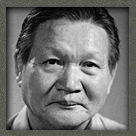 |
|
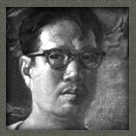 |
|
Cheong was born the youngest of seven children in Amoy, China. His
parents were neutral to his choice of education, when Cheong took to
studying art at in the Xiamen Academy of Fine Art in 1933. In 1936
Cheong graduated and attended Xinhua Academy of Fine Art in Shanghai
for further studies, only to have his education cut short with the
breakout of the Sino-Japanese War and the school destroyed by Japanese
invaders in 1938.
 |
(b. 1913, Guangdong, China–d. 1988, Jakarta, Indonesia) was a
prominent artist based in Indonesia and Singapore. Primarily working
with oil paintings, Lee was associated with the Nanyang style, which
blends Chinese techniques and subjects with Western composition styles
and mediums.
 |
| |
|
|
|
|
 Liu Kang 1911 - 2004
Liu Kang 1911 - 2004 |
|
 Chen WenHsi 1906 - 1991
Chen WenHsi 1906 - 1991 |
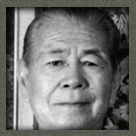 |
|
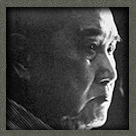 |
|
He was born in
Fujian Province and he spent his early years in Malaysia, studied art
in Shanghai and Paris, and taught art in Shanghai during the 1930s.
Under the influence of Chinese artist and art teacher Liu Haisu
(1896–1994), Liu admired, and often appropriated the styles of
French-based modernist painters such as Cézanne, van Gogh and Matisse.
Liu Kang came to Singapore in 1942 and had been
 |
He was born in Baigong in Guangdong province, and had his early
education at Chen Li Primary School and St. Joseph Middle School.
After graduation from secondary school, Chen Wen Hsi decided to study
full-time in fine art at the Shanghai College of Art in 1928, despite
his uncle's objection. Unhappy with the college, Chen transferred to
the Xinhua College of Art in Shanghai,
 |
| |
|
|
|
|
 Qi Bai-shi 1863-1957
Qi Bai-shi 1863-1957 |
|
 huang binhong
1864-1955
huang binhong
1864-1955 |
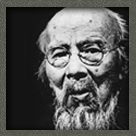 |
|
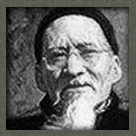 |
|
Since 1918 he resided in Beijing ( 北 京) and lived by his painting and
calligraphy. Most of the subjects he painted were flowers, birds, insects
and fish. In 1928 he began to sign his name on the paintings as 白石 ( Bai-shi
means literally "White Stone," which implies "Snow Mountains"). He said,
at one time, "I learned finger-painting in my youth; landscape painting
after 30; and specialized in flowers, insects and birds after 40." After
that

|
Huang Binhong was born in Zhejiang Province, the grandson of
the well regarded artist Huang Fengliu. Huang studied painting and then
spent many years editing literary and art journals in Shanghai. Huang
Binhong taught painting at fine arts colleges in Shanghai and Beijng until
he moved to Hangzhou in 1948 where he taught at the West Lake Art College. |
| |
|
|
|
|
 Gao Jian-Fu
1879-1951
Gao Jian-Fu
1879-1951 |
|
 Chen
Shu-Ren
1883-1948 Chen
Shu-Ren
1883-1948 |
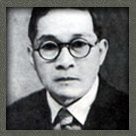 |
|
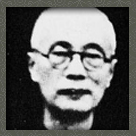 |
|
Gao Jianfu began studying with a prominent local artist, Ju Lian, in Keshan,
Guangdong at the age of fourteen. He learned under his master's tutelage
to paint flowers, plants, and .....
 |
Chen Shu-Ren, whose original name was Shao, alias Nianhua-weixiaozi, Dean-laoren
and Ershan-shanqiao, was born at Mingjing Village of Panyu District in
the Guangdong Province. At the
 |
| |
|
|
|
|
 Pan Yu-Liang
1895-1977
Pan Yu-Liang
1895-1977 |
|
 Zhang Daqian
1899-1983
Zhang Daqian
1899-1983 |
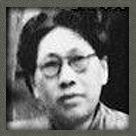 |
|
 |
|
Pan Yuliang's complicated life gets more plentiful after her participation
in art, with her defying and fending characteristics and through movies
and teleplays, the world could rediscover her talent and her art. In 2006
spring, her solo exhibition "Pan Yuliang - the painting soul" was held
in National Museum of History and National Taiwan Museum of Fine Arts,
through 120 paintings, her life and her art were clearly displayed, and
the Pan Yu-liang fever is on the rise.
 |
Zhang Daqian, original name Zhang Yuan (張爰) and pseudonym Daqian, was
one of the best-known and most prodigious Chinese artists of the twentieth
century. He is also regarded by many art experts as one of the most gifted
master forgers of the twentieth century. He excelled at all types of paintings,
and is especially famous for his landscape, as well as lotus paintings.
 |
| |
|
|
|
|
 Long
Chin-San 1892-1995
Long
Chin-San 1892-1995 |
|
 Fu
Bao-shi
1904-1965 Fu
Bao-shi
1904-1965 |
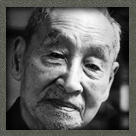 |
|
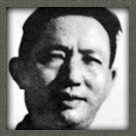 |
|
Mr. Chin-San Long, he was born Zhejiang Province in 1892 and passed away
in 1995 at the age of 104. He devoted himself in the art of photography
for more than 90 years. He made a profound commitment to the art of photography
and lived almost every single minute with camera in hand. Followed
with his teacher Gin-Lan Lee, who was specialized in photography, during
his youth, Long began to find interest in photograph.........
 |
Fu Baoshi was eight years old in 1912 when China's last imperial dynasty
was overthrown and the Chinese Republic was established. He subsequently
witnessed the divisive warlord era of the 1920s, the Japanese invasion
and occupation of eastern China from 1937 to 1945, and the Communist Revolution
and establishment of the People's Republic of China in 1949. Over the
last fifteen years of his life, his art reflected China's political transformation
under Mao Zedong.
 |
| |
|
|
|
|
 Chao
Shao-Ang
1905-1998 Chao
Shao-Ang
1905-1998 |
|
 Guan
Shan Yue
1921-2000 Guan
Shan Yue
1921-2000 |
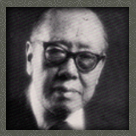 |
|
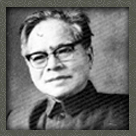 |
|
|
Chao Shao-Ang is a native of Guangzhou, Guangdong. He founded the Lingnan
Art Studio in Guangzhou. In 1937 he served as the head of the Department
of Chinese Painting at the Guangzhou Municipal College of .........

|
Guan Shanyue (1912, Yangjiang, Guangdong Province) graduated from Guangzhou
Municipal Teachers Training College in 1933. His early work consisted
of sketches made in Southwestern and .................

|
| |
|
|
|
|
 Yangshan
Shen
1913-2004 Yangshan
Shen
1913-2004 |
|
 LI
XIONG-CAI
1910-2001 LI
XIONG-CAI
1910-2001 |
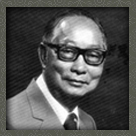 |
|
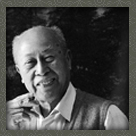 |
|
Yang Shan-hen is one of the most representative artists of the second
generation of the Lingnan School of Painting. Specialized in bird and
flower, figure, landscape painting and excelled in calligraphy, he is
open-minded to adopt the s................... |
A native of Gaoyao, Guangdong, he studied painting under Gao Jianfu at
the Spring Slumber Art Studio in his young age. He had also studied sketch
and later went to Japan and studied Japanese painting at the Tokyo Arts
College. In the 1940s, he toured to Guangxi, Sichuan and ........................ |
| |
|
|
|
|
 Au
Ho-Nien
Au
Ho-Nien |
|
 Jiang Zhao-Shen Jiang Zhao-Shen |
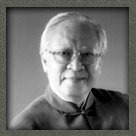 |
|
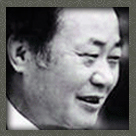 |
|
A painter with the bearing of a master,
one can almost hear birdsong sounding through the mountains/ As he
rises aloft to the Milky Way, he looks back on the innumerable peaks
below . . . (Chao Shao-Ang) Thirty years ago Au Ho-nine master Chao
Shao-Ang,......... |
It has now been
fourteen years since Mr. Jiang Zhao-shen, former Deputy Director at
the National Palace Museum and born in 1925, suddenly passed away
while presenting a lecture at the Lu Xun Academy of Fine Arts in
Shenyang on May 12, 1996. Chiang was not only renowned both
domestically and internationally as a historian of Chinese art, he was
also held in ...... |
| |
|
|
|
|
 James Tan
James Tan
|
|
 Henry Wo
Henry Wo
|
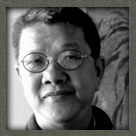 |
|
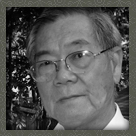 |
|
In his years of study with established
masters of the Lingnan school and more than fifteen more years of
teaching other aspiring artists, James Tan has now emerged as a leader
of the next generation of Lingnan brush ......... |
A subtle fusing of influences drawn from
the East and the West softly permeates Wo paintings. He combines his
strong heritage of Chinese brushwork and principles with his free
translucent washes, punctuated with delicate linear
accents................. |
| |
|
|
|
|

|